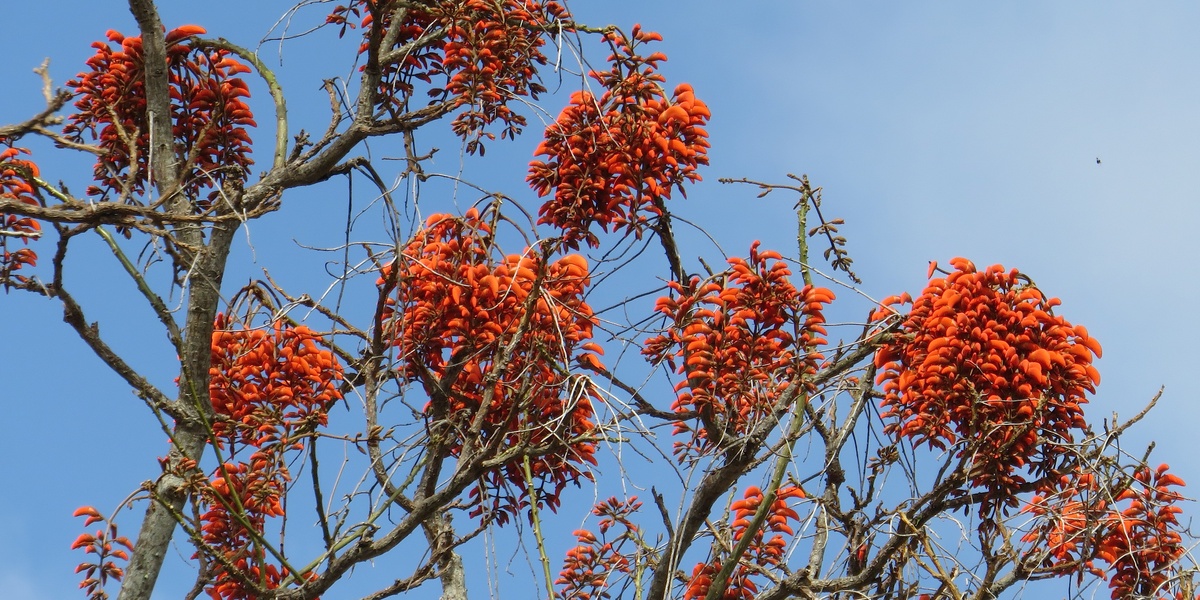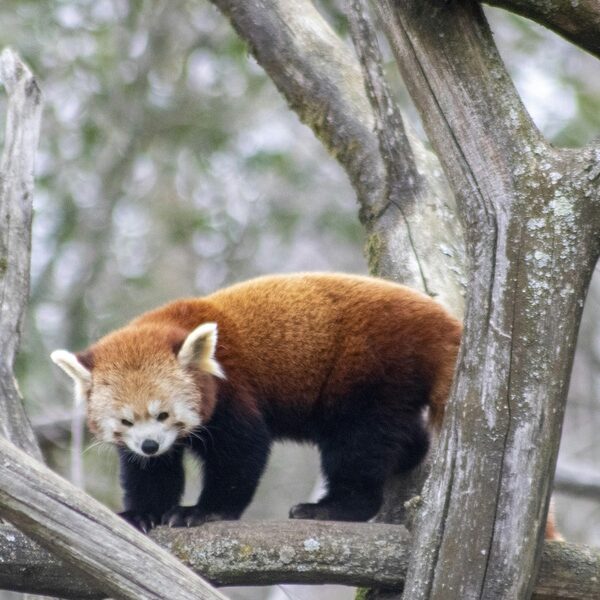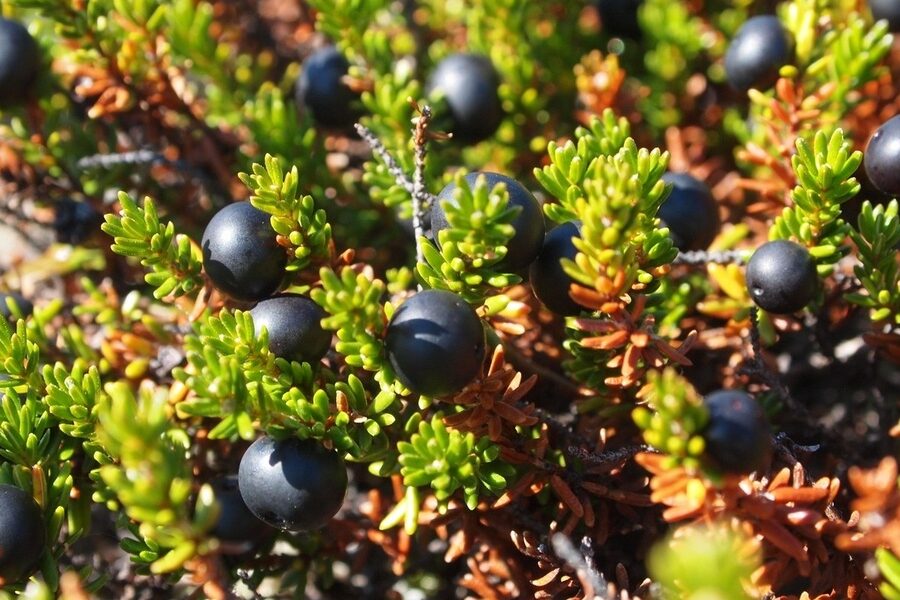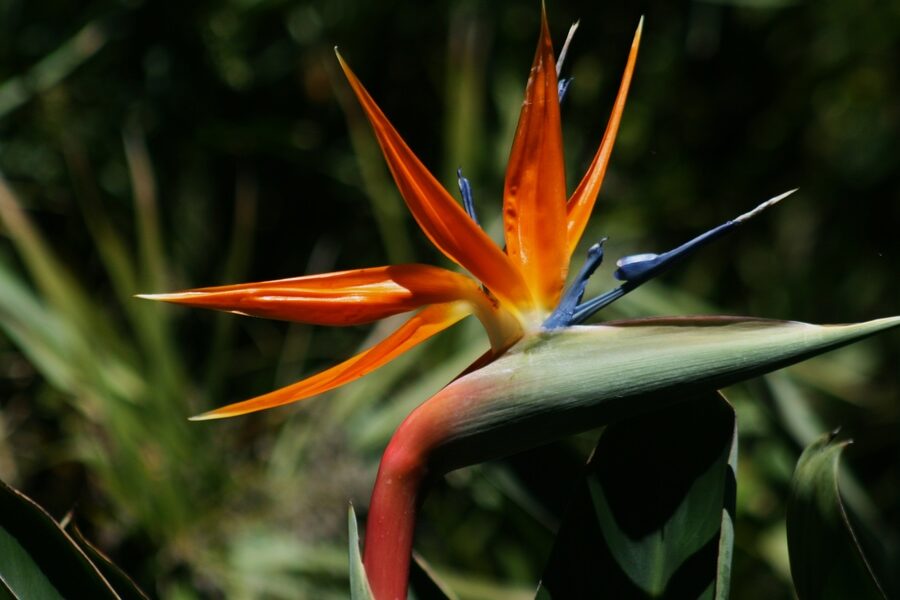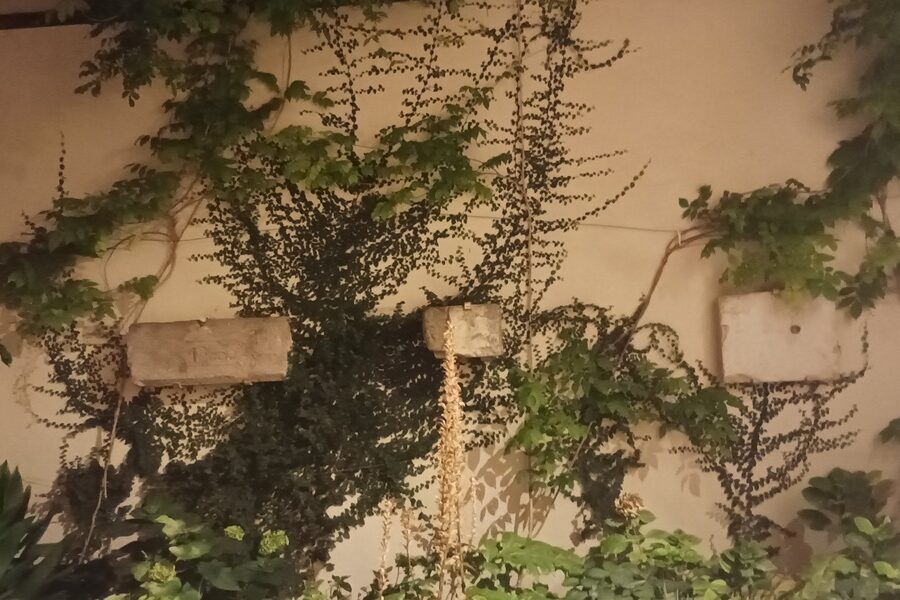This list contains 40 notable Cerrado plants found in Brazil’s savanna. The entries run from Air Plant (an epiphyte) to Wolf Apple (a fruiting shrub). Many species are drought- and fire-tolerant trees, shrubs, grasses, bromeliads, and vines. These plants provide food, medicine, timber, and habitat for wildlife and people. Use authoritative sources like Flora do Brasil and the IUCN for verification (https://www.iucn.org).
Use the table below to find quick facts for each species.
What is the Cerrado and why do its plants matter?
The Cerrado is Brazil’s tropical savanna. It has grasslands, shrublands, and open woodlands. Plants here adapt to dry seasons and frequent fire. They store water, sprout after burns, and grow on poor soils. These traits make Cerrado plants important for wildlife, local food, and traditional uses. Check Flora do Brasil and IUCN for species data and conservation status.
How do I use this list to identify and learn about Cerrado plants?
Use each entry to match a common name with a scientific name. Check the listed height to spot the plant in the field. Read the range and habitat to know where it grows. Note uses, flowering season, and conservation status to learn its role and risk level. The CSV columns map like this: common name; scientific name; typical height; range/habitat; short description and uses. Download the printable checklist to take to the field.
Cerrado Plants
| Plant | Scientific Name | Height | Location | Description |
|---|---|---|---|---|
| Pequi | Caryocar brasiliense | 3-10 m | Central Brazil Cerrado, open savanna | Pequi is a thorny tree with large, yellow-fruited pulp prized in regional cuisine and oil production; fruits feed wildlife and people, flowers attract pollinators, and the species is well adapted to drought and periodic fire, culturally important in central Brazil. |
| Baru Nut | Dipteryx alata | 5-20 m | Cerrado woodlands and gallery forests | Baru is a sturdy tree producing hard, protein-rich nuts eaten roasted or ground into flour; seeds support wildlife and local economies, timber used locally, and the species tolerates poor soils and seasonal drought typical of the Cerrado. |
| Cagaita | Eugenia dysenterica | 3-6 m | Widespread in Cerrado fields and gallery forests | Cagaita is a small tree with tangy orange fruits eaten fresh or made into jams and liqueurs; flowers attract bees, fruits are seasonally important for birds and people, and the plant thrives on well-drained Cerrado soils. |
| Buriti Palm | Mauritia flexuosa | 10-20 m | Wet savannas, gallery forests, river margins | Buriti is a tall palm with edible, vitamin-A-rich fruits and striking bronze leaves; used for food, fiber, and thatch; it forms dense stands in waterlogged areas and supports aquatic wildlife and local economies. |
| Jatobá | Hymenaea courbaril | 20-30 m | Dry forests and Cerrado gallery strips | Jatobá is a large hardwood tree with heavy timber and sweet pods traditionally used for food and resin; flowers attract pollinators; valued for durable wood and resilience to seasonal droughts across Cerrado margins. |
| Golden Trumpet Tree | Handroanthus chrysotrichus | 4-10 m | Open Cerrado and forest edges | Golden Trumpet Tree produces vivid yellow blossoms during the dry season, attracting pollinators and adding seasonal color to the landscape; commonly found along edges and in open Cerrado, used as an ornamental and ecological species. |
| Purple Trumpet Tree | Handroanthus impetiginosus | 6-12 m | Roadsides, gallery forests, Cerrado patches | Purple Trumpet Tree features showy purple flowers that appear when leafless; it attracts bees and hummingbirds, is used ornamentally, and occurs in fragmented Cerrado habitats and gallery forests. |
| Angico | Anadenanthera colubrina | 10-20 m | Dry Cerrado woodlands and riverbanks | Angico is a fragrant, hardwood tree used for timber and traditional remedies; its seeds and bark have ethnobotanical uses, the species improves soils with nitrogen-fixing associations, and it thrives in drier Cerrado zones. |
| Copaiba | Copaifera langsdorffii | 10-25 m | Cerrado woodlands and riparian zones | Copaiba is a tall tree that yields an oily resin tapped for medicinal and industrial use; commonly found near water in Cerrado, the resin has anti-inflammatory uses and the tree supports local livelihoods. |
| Sandpaper Tree | Curatella americana | 1-3 m | Open grassy Cerrado, rocky outcrops | Sandpaper Tree is a low, shrubby species with rough leaves traditionally used as sandpaper; it forms dense thickets on poor soils, tolerates fire, and produces flowers and fruits attractive to insects and birds. |
| Pau-Santo | Kielmeyera coriacea | 3-10 m | Campo sujo and cerrado sensu stricto | Pau-Santo is a small to medium tree with aromatic wood and showy flowers used in traditional remedies; its thick leaves and bark help it resist drought and fire, making it a common Cerrado species. |
| White Sucupira | Pterodon emarginatus | 6-12 m | Cerrado woodlands, well-drained soils | White Sucupira is a medium tree with oil-rich seeds used medicinally and in artisanal products; it tolerates seasonally dry conditions and contributes to local pharmacopoeia and wildlife diets. |
| Murici | Byrsonima crassifolia | 2-6 m | Open Cerrado and edges, well-drained soils | Murici is a shrub or small tree with bright yellow flowers and sour edible fruits used for juices and jams; flowers attract bees, and the plant is a resilient, fire-tolerant component of Cerrado understory. |
| Cerrado Cashew | Anacardium humile | 0.5-3 m | Rocky, open Cerrado areas | Cerrado Cashew is a low, bushy tree producing small cashew-like fruits; fruits and seeds are used locally, the plant is drought-hardy and adapted to shallow, rocky soils common in central Brazilian savannas. |
| Araticum | Annona crassiflora | 2-5 m | Open Cerrado fields, sandy soils | Araticum is a small tree with large, aromatic fruits enjoyed fresh or in desserts; beetle-pollinated flowers and thick, drought-adapted tissues make it a classic Cerrado fruit tree valued by locals and wildlife. |
| Mangaba | Hancornia speciosa | 3-8 m | Sandy soils, cerrado and restinga edges | Mangaba produces sweet, soft fruits and white latex; fruit is commercially important regionally and the tree tolerates poor, sandy soils and seasonal droughts, commonly found at Cerrado edges. |
| Gabiroba | Campomanesia adamantium | 1-4 m | Cerrado grasslands and rocky fields | Gabiroba is a small tree with fragrant yellow fruits used for jams and beverages; leaves have medicinal uses; common in open Cerrado habitats and attractive to birds and small mammals. |
| Mama-Cadela | Various spp. | 1-4 m | Open Cerrado and disturbed areas | Mama-Cadela is a local common name applied to several small shrubs in the Cerrado; fruits or leaves are used locally; identification varies regionally and the plants typically tolerate dry, open habitats. |
| Barbatimão | Stryphnodendron adstringens | 3-10 m | Open Cerrado and gallery margins | Barbatimão is a shrub or small tree with heavily tannin-rich bark used for wound care and tanning; common across the biome, it supports traditional medicine practices and stabilizes soils after fire. |
| Monkey Pepper | Piper aduncum | 0.5-3 m | Gallery forests and shaded Cerrado edges | Monkey Pepper is a shrubby Piper species with aromatic leaves and small peppers used locally as spice or medicine; prefers shaded, moist microsites within the Cerrado and attracts foraging insects. |
| Cambará | Qualea grandiflora | 6-12 m | Cerrado savanna, campo cerrado | Cambará is a medium-sized tree with papery bark and yellowish flowers; used for timber and firewood and adapted to seasonal drought and fire; commonly shapes the Cerrado tree layer. |
| Everlasting | Paepalanthus sp. | <0.5 m | Open grasslands and rocky campos | Everlasting refers to small, cushion-forming plants in Eriocaulaceae with long-lasting bracts used in dried arrangements; they form carpets in open, sun-exposed Cerrado grasslands and survive frequent fire. |
| Marmelada-de-Cachorro | Various spp. | 1-4 m | Cerrado edges and disturbed sites | Marmelada-de-Cachorro is a regional common name for several fruiting shrubs; fruits are sour to bittersweet and used locally; species vary by region and grow in open or disturbed Cerrado spots. |
| Cerrado Arnica | Lychnophora ericoides | 0.2-1 m | Rocky outcrops and campo sujo | Cerrado Arnica is a low, aromatic shrub with yellow daisy-like flowers used in traditional remedies for muscle pain; it grows in shallow soils on rocky Cerrado plateaus and tolerates fire. |
| Canela-de-Ema | Vochysiaceae sp. | 4-12 m | Cerrado woodlands and gallery edges | Canela-de-Ema is a common name for certain trees in the Vochysiaceae family with fragrant bark and showy flowers; used locally for timber and traditional uses, and found in drier Cerrado sectors. |
| Chuveirinho | Qualea sp. | 1-4 m | Rocky fields and open cerrado | Chuveirinho is a small tree or shrub often found on rocky Cerrado soils; produces clusters of flowers and small fruits; adapted to drought and fire and used locally for shade or fence posts. |
| Wild Pineapple | Bromeliaceae sp. | 0.2-1 m | Rocky outcrops and shaded Cerrado sites | Wild Pineapple describes various bromeliads with spiny leaves and small edible or ornamental fruiting stalks; they grow on soils or as epiphytes in protected microhabitats within the Cerrado. |
| Cat’s Claw | Uncaria tomentosa | 2-10 m | Gallery forests and riparian Cerrado | Cat’s Claw is a woody vine with hooked thorns used medicinally for anti-inflammatory purposes; climbs trees in gallery forests and moist Cerrado strips; valued in traditional medicine though conservation caution advised. |
| Wild Passion Flower | Passiflora cincinnata | 1-3 m | Forest edges, hedgerows, Cerrado scrub | Wild Passion Flower is a climbing vine with fragrant, complex flowers and fruit eaten by wildlife and people; supports pollinators and is commonly found at edge habitats within the Cerrado. |
| Wolf Apple | Solanum lycocarpum | 1-3 m | Open Cerrado, campo sujo and campo cerrado | Wolf Apple (lobeira) is a shrub producing large tomato-like fruits that feed maned wolves; ecological interactions are notable; plant tolerates seasonally dry soils and is common across the Cerrado. |
| Arrow Grass | Hayesiana? sp. | 0.1-0.5 m | Wet patches and seasonally flooded campos | Arrow Grass refers to small, grasslike plants occurring in damp Cerrado depressions; they grow in seasonally wet soils and serve as forage and groundcover in marshy microhabitats. |
| Golden Grass | Eriocaulaceae sp. | 0.1-0.6 m | Open grasslands and campos rupestres | Golden Grass denotes small, golden-flowered tufted plants that form carpets in open Cerrado and rocky grasslands; they are fire-tolerant and often collected for dried arrangements. |
| Cerrado Vanilla | Vanilla planifolia? sp. | 0.3-2 m | Shaded gallery forests and humid patches | Cerrado Vanilla refers to native Vanilla orchids that climb in humid, shady microhabitats; flowers are fragrant; species are localized and require forest remnants for survival. |
| St. John’s Vine | Ipomoea sp. | 1-4 m | Hedgerows, forest edges, disturbed Cerrado | St. John’s Vine is a climbing morning-glory relative with showy flowers; often grows along fences and edges, attracting pollinators and providing fast cover in disturbed Cerrado areas. |
| Air Plant | Tillandsia spp. | 0.1-0.5 m | Epiphytic on trees and rocks, gallery forests | Air Plant refers to bromeliads (Tillandsia) that grow without soil on trees and rocks; they absorb moisture from the air, provide microhabitats for insects, and are common in humid Cerrado pockets. |
| Guariroba Palm | Syagrus oleracea | 3-10 m | Open Cerrado and gallery edges | Guariroba is a small to medium palm with edible heart and fruits used locally; tolerates seasonally dry conditions and shallow soils, and is part of traditional agroforestry and local diets. |
| Tucum Palm | Astrocaryum aculeatum | 5-12 m | Gallery forests and moist patches | Tucum is a spiny palm producing edible fruits and oil-rich seeds used for crafts and food; thrives in wetter Cerrado corridors and provides habitat for wildlife and resources for people. |
| Cerrado Pear | Pouteria sp. | 2-6 m | Cerrado woodlands and rocky soils | Cerrado Pear is a common name for small fruiting trees in Sapotaceae with pear-like fruits eaten locally; they occur in well-drained soils and contribute to local diets and wildlife food webs. |
| Dwarf Cashew | Anacardium microcarpum | 0.5-2 m | Rocky, open Cerrado areas | Dwarf Cashew is a small shrub-like cashew species producing edible fruits and nuts; adapted to poor, shallow soils and drought, used locally for food and oil extraction. |
| Pau-Terra | Qualea parviflora | 3-8 m | Cerrado grasslands and wooded areas | Pau-Terra is a medium tree with hard wood used locally for construction and fuel; tolerates dry, open sites and periodic fires, frequently found across central Brazilian savannas. |
| Fava-d’Anta | Dimorphandra mollis | 6-15 m | Cerrado woodlands and campo sujo | Fava-d’Anta is a tree with distinctive bean-like seed pods used in animal forage and sometimes medicinally; it adapts to seasonal drought and is a characteristic species of Cerrado woodlands. |
Images and Descriptions
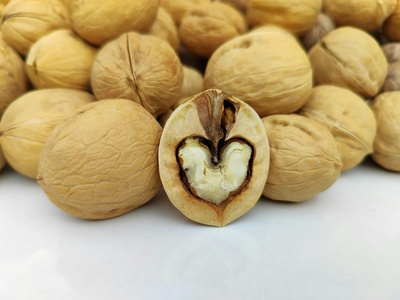
Baru Nut
Baru is a sturdy tree producing hard, protein-rich nuts eaten roasted or ground into flour; seeds support wildlife and local economies, timber used locally, and the species tolerates poor soils and seasonal drought typical of the Cerrado.
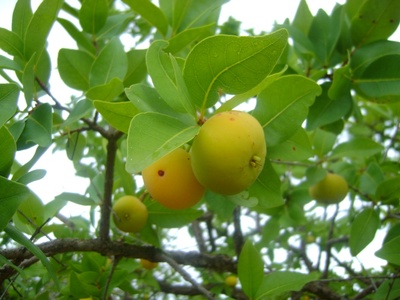
Cagaita
Cagaita is a small tree with tangy orange fruits eaten fresh or made into jams and liqueurs; flowers attract bees, fruits are seasonally important for birds and people, and the plant thrives on well-drained Cerrado soils.
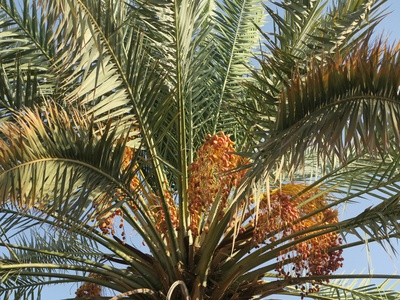
Buriti Palm
Buriti is a tall palm with edible, vitamin-A-rich fruits and striking bronze leaves; used for food, fiber, and thatch; it forms dense stands in waterlogged areas and supports aquatic wildlife and local economies.
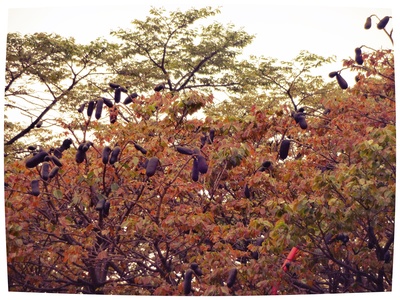
Jatobá
Jatobá is a large hardwood tree with heavy timber and sweet pods traditionally used for food and resin; flowers attract pollinators; valued for durable wood and resilience to seasonal droughts across Cerrado margins.
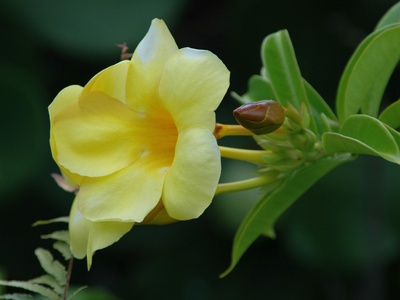
Golden Trumpet Tree
Golden Trumpet Tree produces vivid yellow blossoms during the dry season, attracting pollinators and adding seasonal color to the landscape; commonly found along edges and in open Cerrado, used as an ornamental and ecological species.
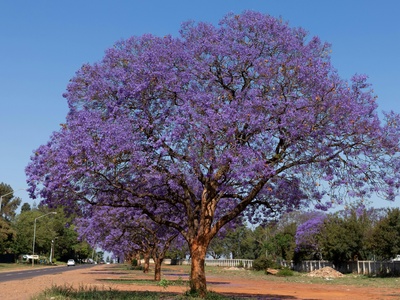
Purple Trumpet Tree
Purple Trumpet Tree features showy purple flowers that appear when leafless; it attracts bees and hummingbirds, is used ornamentally, and occurs in fragmented Cerrado habitats and gallery forests.
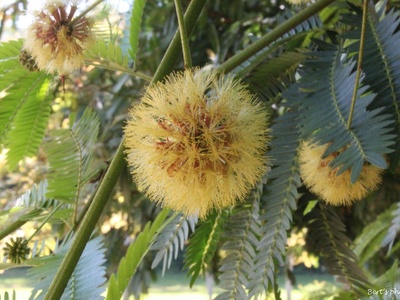
Angico
Angico is a fragrant, hardwood tree used for timber and traditional remedies; its seeds and bark have ethnobotanical uses, the species improves soils with nitrogen-fixing associations, and it thrives in drier Cerrado zones.
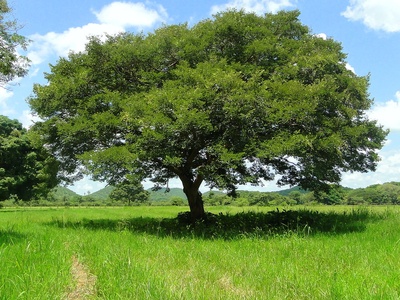
Copaiba
Copaiba is a tall tree that yields an oily resin tapped for medicinal and industrial use; commonly found near water in Cerrado, the resin has anti-inflammatory uses and the tree supports local livelihoods.
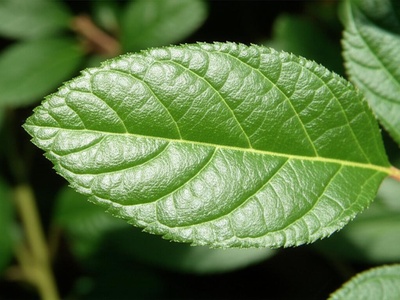
Sandpaper Tree
Sandpaper Tree is a low, shrubby species with rough leaves traditionally used as sandpaper; it forms dense thickets on poor soils, tolerates fire, and produces flowers and fruits attractive to insects and birds.
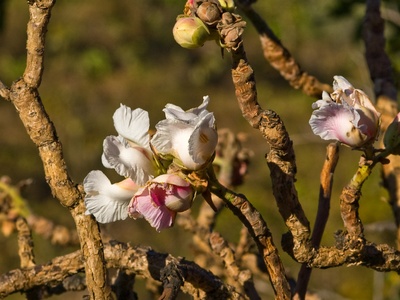
Pau-Santo
Pau-Santo is a small to medium tree with aromatic wood and showy flowers used in traditional remedies; its thick leaves and bark help it resist drought and fire, making it a common Cerrado species.

White Sucupira
White Sucupira is a medium tree with oil-rich seeds used medicinally and in artisanal products; it tolerates seasonally dry conditions and contributes to local pharmacopoeia and wildlife diets.
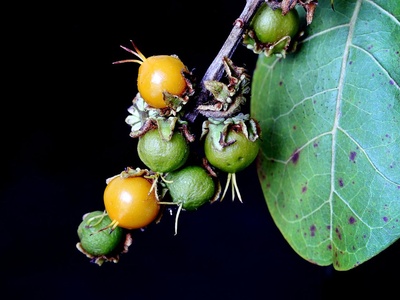
Murici
Murici is a shrub or small tree with bright yellow flowers and sour edible fruits used for juices and jams; flowers attract bees, and the plant is a resilient, fire-tolerant component of Cerrado understory.
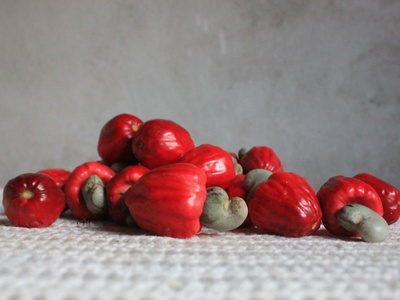
Cerrado Cashew
Cerrado Cashew is a low, bushy tree producing small cashew-like fruits; fruits and seeds are used locally, the plant is drought-hardy and adapted to shallow, rocky soils common in central Brazilian savannas.
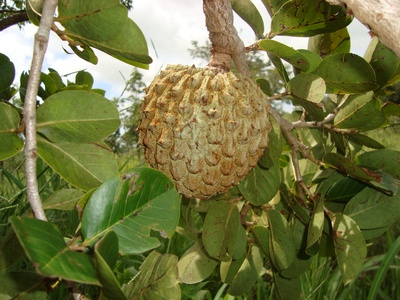
Araticum
Araticum is a small tree with large, aromatic fruits enjoyed fresh or in desserts; beetle-pollinated flowers and thick, drought-adapted tissues make it a classic Cerrado fruit tree valued by locals and wildlife.
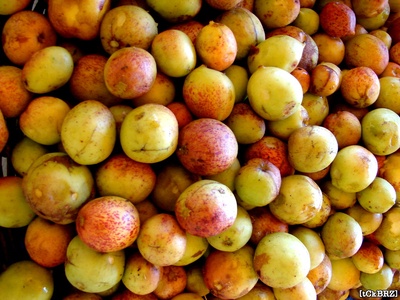
Mangaba
Mangaba produces sweet, soft fruits and white latex; fruit is commercially important regionally and the tree tolerates poor, sandy soils and seasonal droughts, commonly found at Cerrado edges.
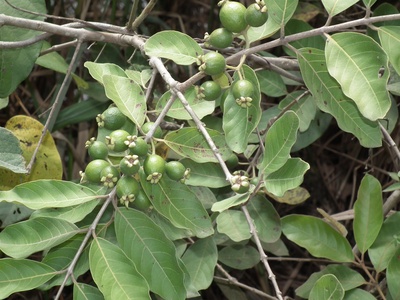
Gabiroba
Gabiroba is a small tree with fragrant yellow fruits used for jams and beverages; leaves have medicinal uses; common in open Cerrado habitats and attractive to birds and small mammals.

Mama-Cadela
Mama-Cadela is a local common name applied to several small shrubs in the Cerrado; fruits or leaves are used locally; identification varies regionally and the plants typically tolerate dry, open habitats.
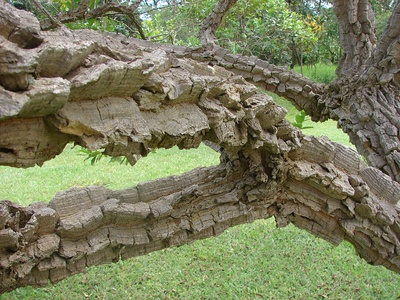
Barbatimão
Barbatimão is a shrub or small tree with heavily tannin-rich bark used for wound care and tanning; common across the biome, it supports traditional medicine practices and stabilizes soils after fire.

Monkey Pepper
Monkey Pepper is a shrubby Piper species with aromatic leaves and small peppers used locally as spice or medicine; prefers shaded, moist microsites within the Cerrado and attracts foraging insects.
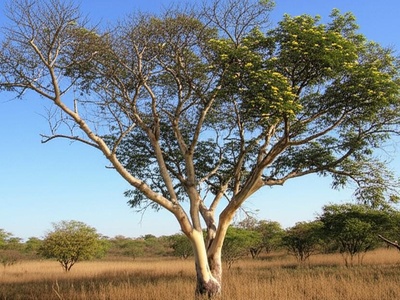
Cambará
Cambará is a medium-sized tree with papery bark and yellowish flowers; used for timber and firewood and adapted to seasonal drought and fire; commonly shapes the Cerrado tree layer.
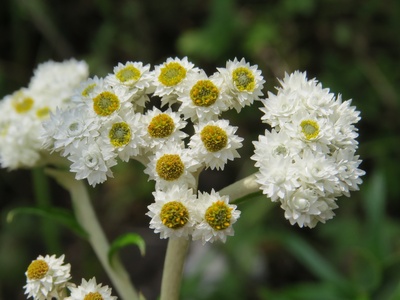
Everlasting
Everlasting refers to small, cushion-forming plants in Eriocaulaceae with long-lasting bracts used in dried arrangements; they form carpets in open, sun-exposed Cerrado grasslands and survive frequent fire.
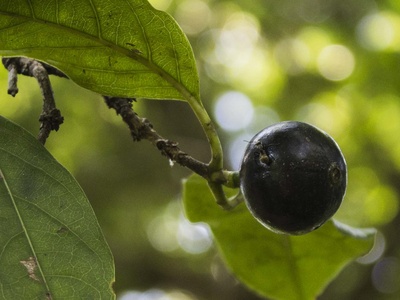
Marmelada-de-Cachorro
Marmelada-de-Cachorro is a regional common name for several fruiting shrubs; fruits are sour to bittersweet and used locally; species vary by region and grow in open or disturbed Cerrado spots.
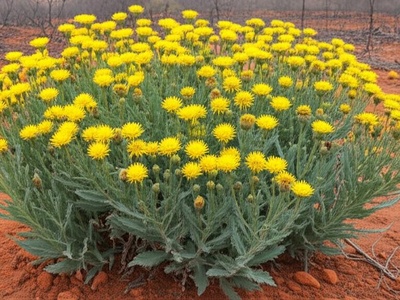
Cerrado Arnica
Cerrado Arnica is a low, aromatic shrub with yellow daisy-like flowers used in traditional remedies for muscle pain; it grows in shallow soils on rocky Cerrado plateaus and tolerates fire.
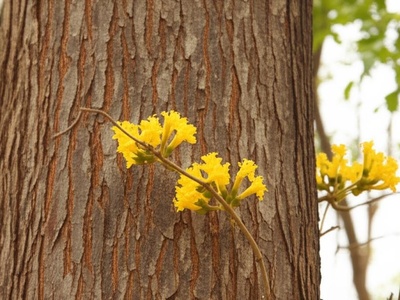
Canela-de-Ema
Canela-de-Ema is a common name for certain trees in the Vochysiaceae family with fragrant bark and showy flowers; used locally for timber and traditional uses, and found in drier Cerrado sectors.
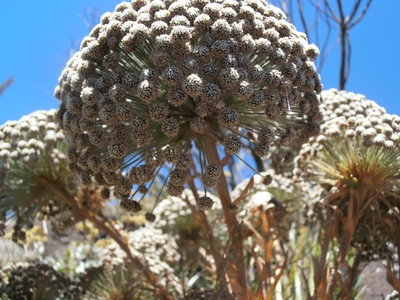
Chuveirinho
Chuveirinho is a small tree or shrub often found on rocky Cerrado soils; produces clusters of flowers and small fruits; adapted to drought and fire and used locally for shade or fence posts.
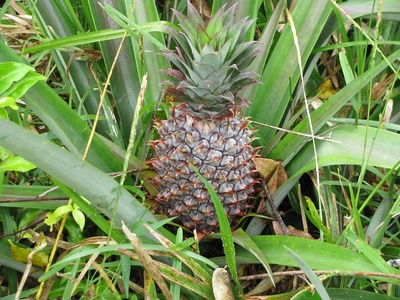
Wild Pineapple
Wild Pineapple describes various bromeliads with spiny leaves and small edible or ornamental fruiting stalks; they grow on soils or as epiphytes in protected microhabitats within the Cerrado.
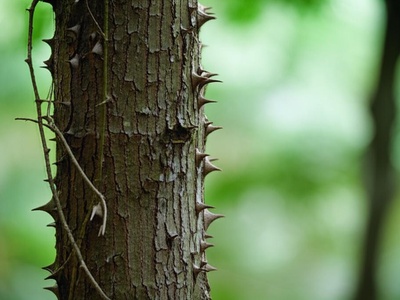
Cat’s Claw
Cat’s Claw is a woody vine with hooked thorns used medicinally for anti-inflammatory purposes; climbs trees in gallery forests and moist Cerrado strips; valued in traditional medicine though conservation caution advised.
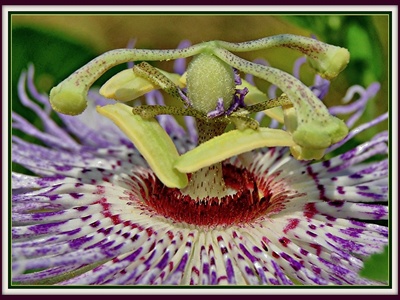
Wild Passion Flower
Wild Passion Flower is a climbing vine with fragrant, complex flowers and fruit eaten by wildlife and people; supports pollinators and is commonly found at edge habitats within the Cerrado.
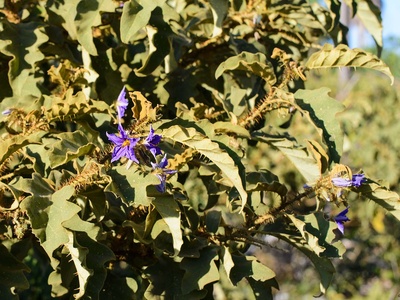
Wolf Apple
Wolf Apple (lobeira) is a shrub producing large tomato-like fruits that feed maned wolves; ecological interactions are notable; plant tolerates seasonally dry soils and is common across the Cerrado.
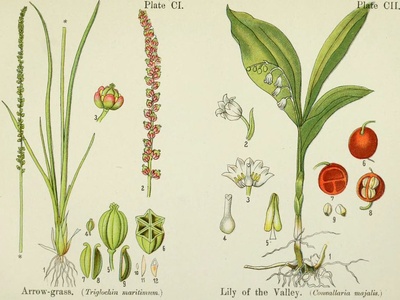
Arrow Grass
Arrow Grass refers to small, grasslike plants occurring in damp Cerrado depressions; they grow in seasonally wet soils and serve as forage and groundcover in marshy microhabitats.
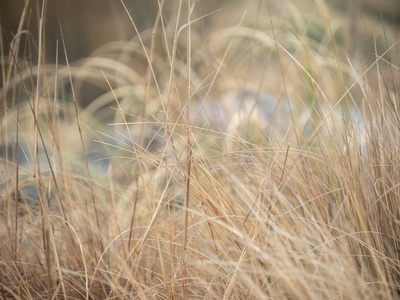
Golden Grass
Golden Grass denotes small, golden-flowered tufted plants that form carpets in open Cerrado and rocky grasslands; they are fire-tolerant and often collected for dried arrangements.

Cerrado Vanilla
Cerrado Vanilla refers to native Vanilla orchids that climb in humid, shady microhabitats; flowers are fragrant; species are localized and require forest remnants for survival.
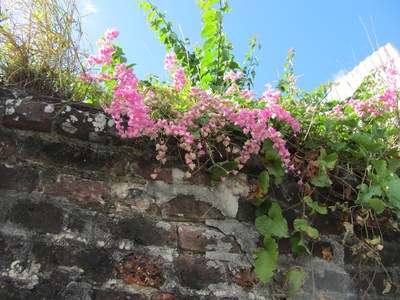
St. John’s Vine
St. John’s Vine is a climbing morning-glory relative with showy flowers; often grows along fences and edges, attracting pollinators and providing fast cover in disturbed Cerrado areas.
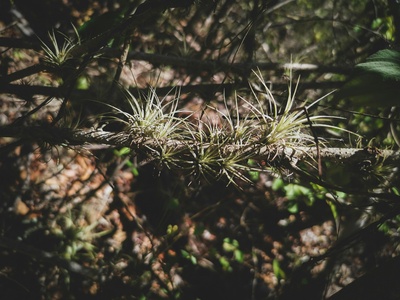
Air Plant
Air Plant refers to bromeliads (Tillandsia) that grow without soil on trees and rocks; they absorb moisture from the air, provide microhabitats for insects, and are common in humid Cerrado pockets.
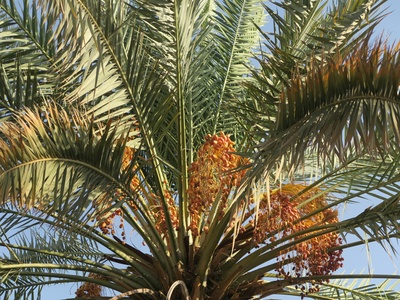
Guariroba Palm
Guariroba is a small to medium palm with edible heart and fruits used locally; tolerates seasonally dry conditions and shallow soils, and is part of traditional agroforestry and local diets.

Tucum Palm
Tucum is a spiny palm producing edible fruits and oil-rich seeds used for crafts and food; thrives in wetter Cerrado corridors and provides habitat for wildlife and resources for people.
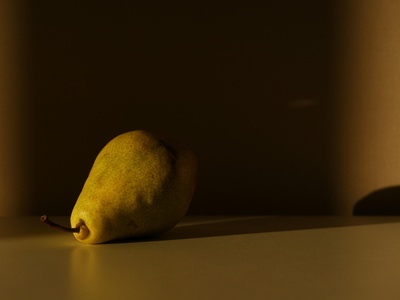
Cerrado Pear
Cerrado Pear is a common name for small fruiting trees in Sapotaceae with pear-like fruits eaten locally; they occur in well-drained soils and contribute to local diets and wildlife food webs.
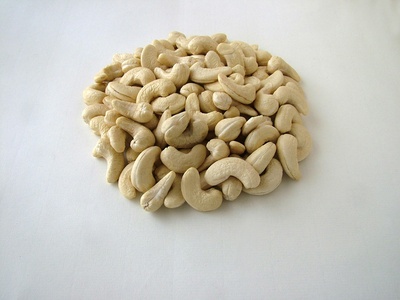
Dwarf Cashew
Dwarf Cashew is a small shrub-like cashew species producing edible fruits and nuts; adapted to poor, shallow soils and drought, used locally for food and oil extraction.
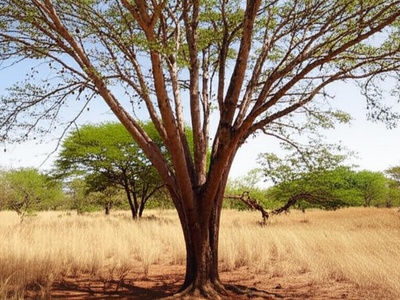
Pau-Terra
Pau-Terra is a medium tree with hard wood used locally for construction and fuel; tolerates dry, open sites and periodic fires, frequently found across central Brazilian savannas.
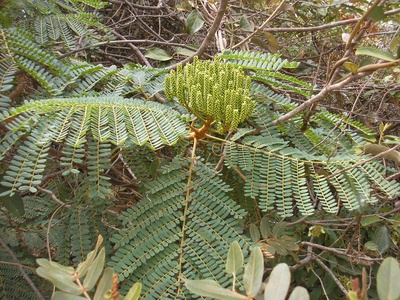
Fava-d’Anta
Fava-d’Anta is a tree with distinctive bean-like seed pods used in animal forage and sometimes medicinally; it adapts to seasonal drought and is a characteristic species of Cerrado woodlands.
